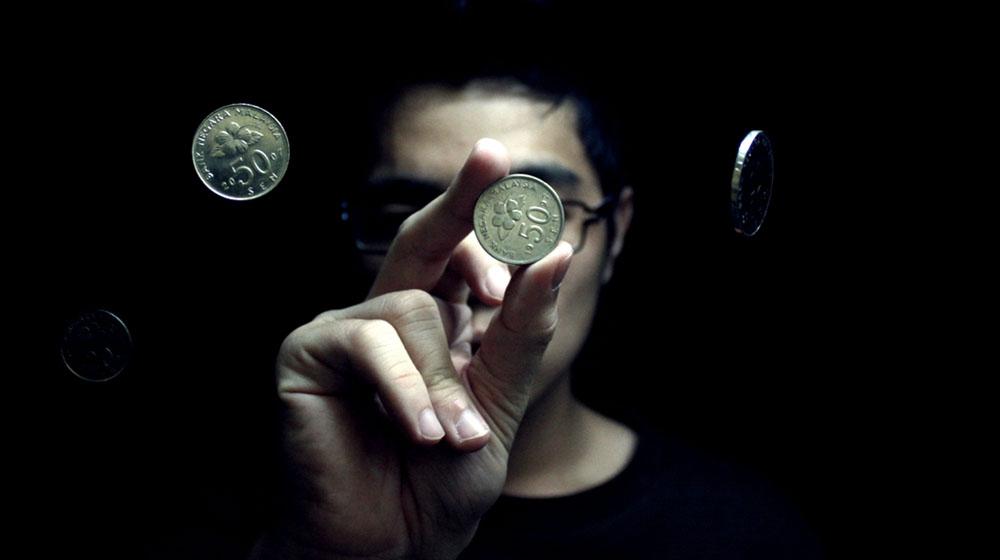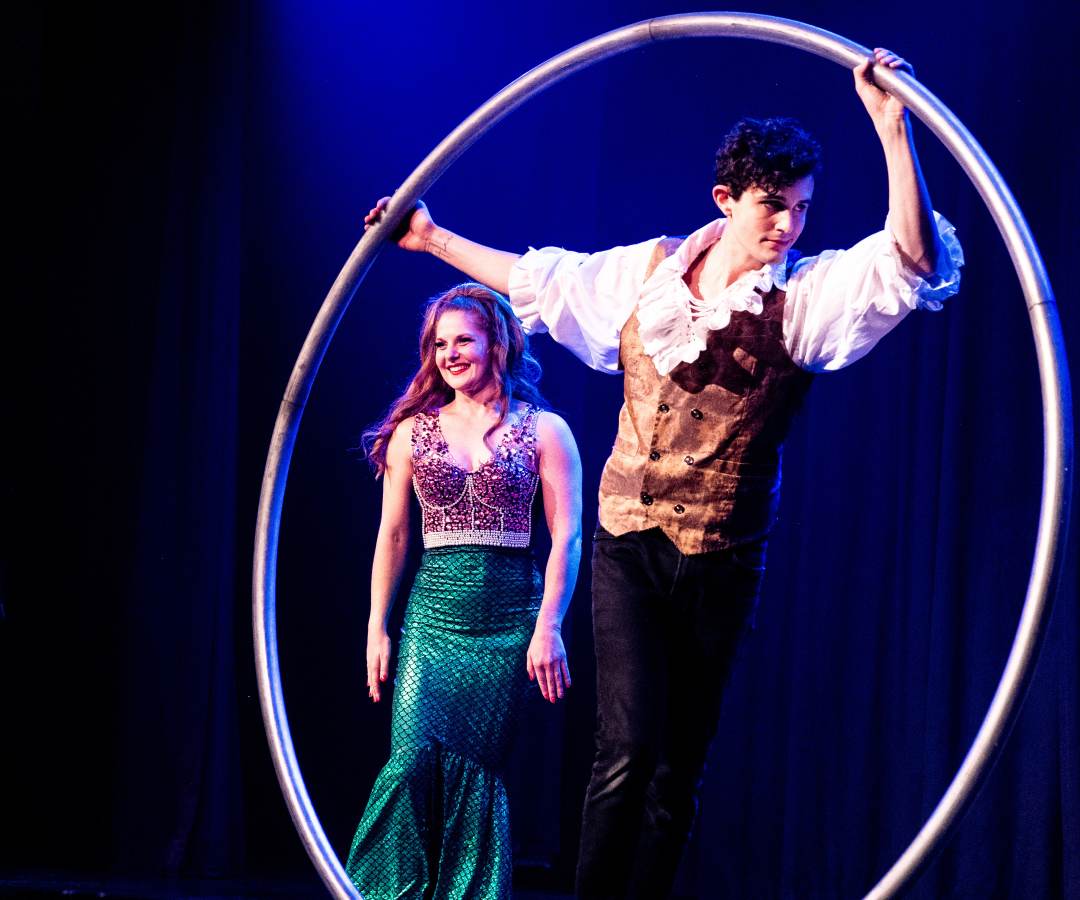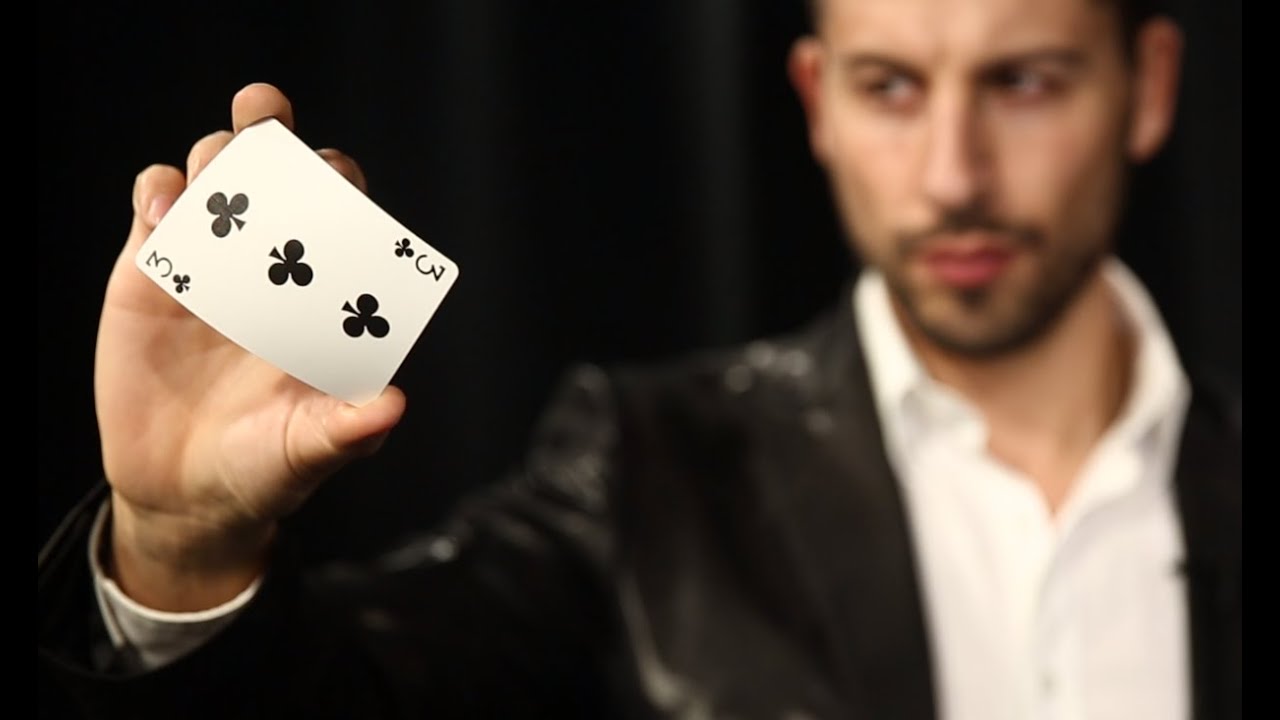5 Types Of Magic Tricks
What are the best 5 types of magic tricks? Magic tricks have captivated audiences for centuries, enchanting and mystifying us with seemingly impossible feats. From sleight of hand to grand illusions, the world of magic is diverse and intriguing.
Author:Sonia RavenwoodReviewer:Aurora SmithAug 31, 2023212 Shares105.8K Views

What are the best 5 types of magic tricks? Magictricks have captivated audiences for centuries, enchanting and mystifying us with seemingly impossible feats. From sleight of hand to grand illusions, the world of magic is diverse and intriguing.
It takes many magicians their whole life to perfect the art of deception, but you don't need to put in as much effort to wow your loved ones. You may quickly learn to accomplish a variety of astounding feats that will wow onlookers with the appropriate knowledge and little practice.
Make a pencil float in your hand or slide a cup through a solid tabletop as your first few basic beginning tricks to master. Next, go to a technique that requires more skill, like levitating or making a penny disappear.
People from all walks of life continue to be fascinated and intrigued by magic, an ancient art form that has mesmerized and delighted audiences for ages.
Magicians' talent and expertise, along with the appeal of the apparently impossible, have left audiences in awe and made viewers doubt reality itself. In this article, we will explore five types of magic tricks that continue to amaze and delight audiences around the globe.
What Types Of Tricks Do Magicians Perform?
Magic tricks have a wide range of diversity, encompassing various genres and styles that continue to captivate audiences worldwide.
You've undoubtedly heard of these tricks before, whether you're a magician or simply a follower of the craft.
Let's take a closer look at them and evaluate how each kind produces the most incredible illusions and feats of magic.
From mesmerizing illusions to mind-bending mentalism, magicians employ a plethora of techniques to create wonder and astonishment. Let's delve into some lesser-known categories of magic tricks that showcase the creativity and artistry of magicians.
Appearance
There was once nothing there, but now there is an item there. The magician conjures something out of thin air to wow the audience. Is it possible that you saw a traditional "rabbit out of a hat" trick? Or, it's possible that you saw a magician produce a coin from behind the ear of a volunteer participant. Both of these are instances of trickery involving the look of something.
Levitation
This magic trick creates the appearance that an item is suspended in midair without any support from machinery or direct physical touch. Levitation is derived from the Latin word "levitas," which means "lightness."
Restoration
When something is sliced in two and then smoothly put back together after being destroyed and made whole again.
Transformation
This kind of trick involves the transformation of one object into another, such as the transformation of wine or water.
5 Types Of Magic Performances
Magic is a captivating art form that takes on various forms and styles, each with its own distinct characteristics and appeal. Magicians harness their skills to craft mesmerizing performances that leave audiences spellbound.
Since ancient times, magicians have performed magic tricks for audiences, mesmerizing them with amazing illusions. But what kinds of magic tricks are there?
From theatrical stage shows to intimate street performances, let's explore five types of magic performances that showcase the versatility and creativity of magicians.
Stage Spectacles - Grand Illusions And Theatrical Wonders
Stage magic is the epitome of grandeur and spectacle. Magicians who specialize in this type of performance create elaborate productions featuring large-scale illusions, dazzling sets, and captivating narratives. These performances often involve the use of assistants, intricate machinery, and carefully choreographed sequences to create breathtaking moments of wonder.
Stage magicians like David Copperfield and Criss Angel have pushed the boundaries of what's possible on stage, making airplanes disappear and walking through solid walls. These performances transport audiences to a world of fantasy and astonishment, reminding us of the transformative power of theatrical magic.
Close-Up Enchantments - Magic Up Close And Personal
Close-up magic, also known as table magic or strolling magic, offers an intimate and interactive experience for audiences. Magicians who specialize in this style perform tricks right in front of small groups or individual spectators, using everyday objects like cards, coins, and ropes. The close proximity allows for a more personal connection between the magician and the audience, creating a sense of wonder that's almost palpable.
Close-up magicians engage with their spectators on a one-on-one basis, involving them directly in the magic tricks. This type of performance relies heavily on the magician's skill in sleight of hand and misdirection, as well as their ability to establish rapport and engage with people from all walks of life.
Street Magic - Astonishment On The Pavement
Street magic takes the art of magic to the open-air stage of bustling streets and public spaces. Magicians who practice street magic use their surroundings, everyday objects, and unsuspecting pedestrians to create astonishing moments of surprise and amazement. This type of performance often blurs the line between performer and audience, as passersby become part of the spectacle.
Street magicians like Dynamo and David Blaine have elevated the status of street magic, performing mind-boggling tricks in the most unexpected locations. From levitating in plain sight to making objects vanish and reappear, street magic captures the spontaneous and unfiltered reactions of unsuspecting onlookers, creating a raw and unscripted form of entertainment.
Corporate Magic - Enchanting Business Audiences
Corporate magic combines entertainment with business events, seminars, and conferences. Magicians who specialize in this genre tailor their performances to engage and motivate corporate audiences, often using magic as a metaphor to convey key messages and concepts. Corporate magic not only provides entertainment but also offers a unique way to communicate ideas and build connections.
Corporate magicians might incorporate themes related to teamwork, innovation, and problem-solving into their performances. These performances create a memorable experience for attendees, leaving them with a lasting impression and a renewed sense of motivation.
What Exactly Is Sleight Of Hand?
Sleight of hand is the cornerstone of magic that involves intricate hand movements and clever manipulation to create illusions that defy reality. This captivating technique forms the foundation of many magic tricks, from making objects disappear to transforming one thing into another.
As one of the most fundamental and captivating aspects of magic, sleight of hand demands precision, practice, and a deep understanding of human perception.
The Art Of Deception Through Dexterity
At its core, sleight of hand is the art of deceiving the eyes and minds of the audience. It relies on the magician's ability to manipulate objects with such skill and speed that the audience remains completely unaware of the secret maneuvers taking place.
By diverting attention and using misdirection, the magician ensures that the audience focuses on one aspect of the performance while the real magic happens unnoticed.
Sleight of hand encompasses a wide range of techniques, including palming, ditching, switching, and forcing. Each technique serves a specific purpose in creating illusions that seem impossible.
For example, palming involves concealing an object in the magician's hand without the audience detecting it, while ditching allows the magician to secretly dispose of an object they no longer need.
From Cards To Coins - A World Of Possibilities
Sleight of hand can be applied to a variety of objects, with playing cards and coins being some of the most commonly used. Card tricks, in particular, often showcase the magician's mastery of sleight of hand. Whether it's making a chosen card appear at the top of the deck or causing a card to change its appearance, card manipulation requires impeccable timing and seamless execution.
Coins, on the other hand, offer a tangible and versatile canvas for sleight of hand. Magicians can make coins vanish, multiply, or even penetrate solid objects with a flick of their wrist. The subtle movements and maneuvers used to accomplish these feats are the result of countless hours of practice and refinement.
The Psychology Of Perception And Misdirection
Sleight of hand is not only about physical dexterity; it also relies heavily on psychology and understanding how the human mind processes information. Magicians exploit the brain's tendency to focus on specific cues and details, using misdirection to divert attention away from the crucial moments of manipulation.
By directing the audience's gaze to one hand while performing a secret move with the other, magicians create a cognitive dissonance that prevents spectators from catching on to the trick. The brain fills in the gaps of what it expects to see, allowing the magician to execute astonishing feats right before the audience's eyes.
The Journey Of Mastery And Practice
Becoming proficient in sleight of hand is a journey that requires dedication, patience, and countless hours of practice. Magicians often spend years honing their skills, perfecting the timing and precision needed to execute even the most intricate moves flawlessly. The process involves countless repetitions, constant refinement, and learning from mistakes.
The journey to mastery is not without its challenges. Learning to control every nuance of hand movements, mastering muscle memory, and adapting techniques to suit different performing conditions are just some of the obstacles magicians must overcome. However, the reward is the ability to create moments of pure wonder and amazement that captivate audiences and leave them questioning the boundaries of reality.
A Window Into The Art Of Magic
Sleight of hand is more than just a technique; it's a window into the artistry of magic itself. It embodies the magician's ability to manipulate the ordinary and transform it into the extraordinary.
Through skillful manipulation and the careful orchestration of deception, the sleight of hand keeps the audience guessing, marveling at the impossible, and believing, even if just for a moment, in the magic unfolding before them.
Tips For Perfecting Different Types Of Magic Tricks
Mastering the art of magic requires not only a deep understanding of the techniques but also a commitment to practice, creativity, and audience engagement. Whether you're delving into mentalism, escapology, or any other type of magic, here are some tips to help you perfect your skills and create captivating performances.
Sleight Of Hand - Refining The Art Of Deception
Sleight of hand is all about precision and timing. To enhance your skills in this area, focus on the following tips.
- Practice Regularly- Dedicate time each day to practicing your sleight-of-hand techniques. Consistent practice builds muscle memory and improves your execution.
- Use a Mirror- Practicing in front of a mirror allows you to see your movements from different angles, helping you identify flaws and refine your technique.
- Slow Down- When learning new moves, perform them slowly and deliberately. As you become more comfortable, gradually increase your speed.
- Focus on Misdirection - Mastering misdirection is essential. Practice engaging your audience's attention while executing moves that happen out of their direct line of sight.
- Seek Feedback - Record your practice sessions and review them critically. Consider seeking feedback from fellow magicians to identify areas for improvement.
Mentalism - Connecting With Your Audience's Mind
Creating an air of mystery and psychicillusion in mentalism requires a strong connection with your audience. Here's how to enhance your mentalism performance.
- Study Psychology- Understanding psychological principles can enhance your ability to read people and predict their actions.
- Practice Observation- Pay close attention to nonverbal cues, gestures, and microexpressions. These subtle signals can provide valuable insights into your audience's thoughts.
- Enhance Storytelling - Develop compelling narratives that accompany your mentalism routines. Engaging stories help captivate your audience and make your predictions seem more plausible.
- Engage Spectators - Encourage audience participation to build rapport and make your performances more interactive. This involvement enhances the overall experience.
- Be Adaptable- Mentalism often involves adjusting your performance based on audience reactions. Be prepared to change your approach on the fly to maintain the illusion.
Escapology - Navigating Boundaries And Danger
Escapology requires not only physical skill but also mental resilience. Here are some tips to master this daring art.
- Safety First - Prioritize safety in all your escape acts. Practice escape techniques with the utmost care, and never attempt a feat without thorough preparation.
- Understand Mechanics- Study the mechanics of locks, restraints, and props. Knowing how they work enables you to devise clever ways to manipulate or bypass them.
- Build Stamina - Many escape acts require physical endurance. Regular exercise and conditioning can help you build the strength and flexibility needed for daring feats.
- Rehearse Under Pressure - Practice your escapes under simulated pressure conditions. This prepares you for the adrenaline and stress of a live performance.
- Maintain Composure- While performing, stay calm and composed, even if challenges arise. Your ability to remain in control enhances the suspense and drama of the act.
Illusions - Crafting Grand Visual Experiences
Illusion magic demands meticulous planning and attention to detail. Here's how to make your illusions awe-inspiring.
- Perfect Timing- Choreograph each step of your illusion meticulously. Smooth and precise timing ensures that the illusion appears seamless to the audience.
- Stagecraft - Utilize lighting, set design, and music to enhance the impact of your illusions. These elements set the tone and atmosphere for your performance.
- Assistant Training- If your illusion involves assistants, ensure they are well-rehearsed and aware of their cues. A synchronized team elevates the overall effect.
- Audience Perspective- Consider the audience's point of view when designing illusions. What looks deceptive from one angle may reveal secrets from another.
- Practice Misdirection - Illusions often involve elaborate misdirection techniques. Hone your ability to direct audience attention where you want it, enhancing the mystery.
People Also Ask
What Is Mentalism In The Realm Of Magic?
Mentalism is a type of magic that involves creating the illusion of mind-reading, clairvoyance, and other psychic abilities.
How Does Escapology Differ From Other Types Of Magic Tricks?
Escapology focuses on performing daring acts of escaping from restraints or confinement, often involving locks, chains, and risky situations.
What Makes Illusion Magic Stand Out As A Type Of Magic Performance?
Illusion magic utilizes grand setups, visual spectacles, and elaborate stagecraft to create awe-inspiring and larger-than-life magical experiences.
How Does Close-up Magic Establish A More Intimate Connection With The Audience?
Close-up magic involves performing tricks right in front of small groups or individuals, allowing for direct interaction and personal engagement with the audience.
What Is The Significance Of Misdirection In Sleight-of-hand Magic?
Misdirection in sleight of hand magic involves diverting the audience's attention away from the secret maneuvers, creating the illusion that the impossible is happening before their eyes.
Conclusion
In the world of magic, the allure of wonder and astonishment takes shape through various captivating forms, collectively known as the "5 Types of Magic Tricks."
Each type holds its unique charm, from the skillful mastery of sleight of hand to the enigmatic world of mentalism, where minds are read and predictions astound. Escapology dares to challenge confinement's boundaries, while illusion magic crafts grand visual spectacles that defy logic.
Meanwhile, close-up magic establishes an intimate connection between the magician and the audience, making each trick an interactive marvel. The world of magic continues to flourish through these diverse types, enchanting audiences and reminding us that the realm of the impossible is only a trick away.

Sonia Ravenwood
Author
Sonia Ravenwood is an accomplished writer with a profound passion for exploring spirituality, magical practices, and the significance of numbers.
She has published numerous works exploring spiritual growth, magical practices, and the significance of numbers on reputable platforms.
Her insightful content reflects her expertise and dedication, making complex concepts accessible and engaging for readers.
Prior to focusing on writing, Sonia held various roles in content creation and marketing, honing her skills in communication and storytelling.

Aurora Smith
Reviewer
Aurora Smith is an expert with over 8 years in psychics, with a passion for tarot reading.
She holds a Bachelor of Arts in Anthropology from Stanford University, bringing a strong academic foundation to her work in exploring mystical phenomena.
With her expertise in psychics, Aurora delves into tarot readings and magical practices, providing insightful content that engages and enlightens readers.
Her writing style is characterized by clarity and engagement, making complex concepts accessible and intriguing for readers.
Outside of her writing pursuits, Aurora enjoys delving into the mysteries of the supernatural world and practicing tarot readings.
Latest Articles
Popular Articles





